Related Research Articles

Saxe-Coburg and Gotha, or Saxe-Coburg-Gotha, was an Ernestine, Thuringian duchy ruled by a branch of the House of Wettin, consisting of territories in the present-day states of Thuringia and Bavaria in Germany. It lasted from 1826 to 1918. In November 1918, Charles Edward, Duke of Saxe-Coburg and Gotha, was forced to abdicate. In 1920, the northern part of the duchy was merged with six other Thuringian free states to form the Free State of Thuringia: Saxe-Weimar-Eisenach, Saxe-Altenburg and Saxe-Meiningen, Schwarzburg-Rudolstadt and Schwarzburg-Sondershausen, as well as the People's State of Reuss. The southern part of the duchy, as southernmost of the Thuringian states, was the only one which, after a referendum, became part of the Free State of Bavaria.

The House of Wettin is a dynasty of German counts, dukes, prince-electors and kings that once ruled territories in the present-day German states of Saxony, Saxony-Anhalt and Thuringia. The dynasty is one of the oldest in Europe, and its origins can be traced back to the town of Wettin, Saxony-Anhalt. The Wettins gradually rose to power within the Holy Roman Empire. Members of the family became the rulers of several medieval states, starting with the Saxon Eastern March in 1030. Other states they gained were Meissen in 1089, Thuringia in 1263, and Saxony in 1423. These areas cover large parts of Central Germany as a cultural area of Germany.

Saxe-Altenburg was one of the Saxon duchies held by the Ernestine branch of the House of Wettin in present-day Thuringia. It was one of the smallest of the German states with an area of 1323 square kilometers and a population of 207,000 (1905) of whom about one fifth resided in the capital, Altenburg. The territory of the duchy consisted of two non-contiguous territories separated by land belonging to the Principality of Reuss. Its economy was based on agriculture, forestry, and small industry. The state had a constitutional monarchical form of government with a parliament composed of thirty members chosen by male taxpayers over 25 years of age.
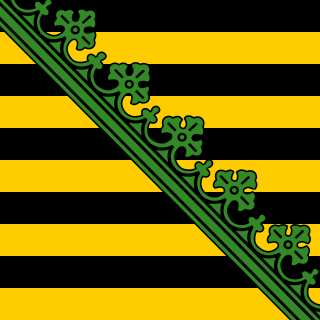
Saxe-Gotha was one of the Saxon duchies held by the Ernestine branch of the Wettin dynasty in the former Landgraviate of Thuringia. The ducal residence was erected at Gotha.

Hildburghausen is a town in Thuringia in central Germany, capital of the district Hildburghausen.

Saxe-Coburg-Saalfeld was one of the Saxon Duchies held by the Ernestine line of the Wettin Dynasty. Established in 1699, the Saxe-Coburg-Saalfield line lasted until the reshuffle of the Ernestine territories that occurred following the extinction of the Saxe-Gotha line in 1825, in which the Saxe-Coburg-Saalfeld line received Gotha, but lost Saalfeld to Saxe-Meiningen.
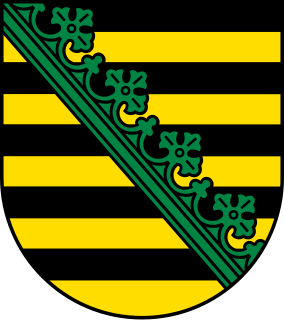
The Ernestine duchies, also known as the Saxon duchies, were a changing number of small states that were largely located in the present-day German state of Thuringia and governed by dukes of the Ernestine line of the House of Wettin.
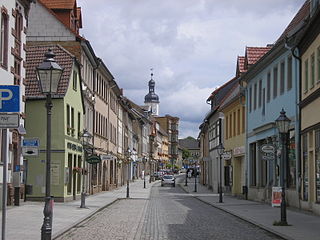
Eisenberg is a town in Thuringia, Germany. It is the capital of the district Saale-Holzland.

Frederick I, Duke of Saxe-Gotha-Altenburg, was a duke of Saxe-Gotha-Altenburg. He was the fourth but eldest surviving son of Ernst I, Duke of Saxe-Coburg-Altenburg and Elisabeth Sophie of Saxe-Altenburg.

Joseph Georg Friedrich Ernst Karl, Duke of Saxe-Altenburg, was a Duke of Saxe-Altenburg.

Georg Karl Frederick was a duke of Saxe-Altenburg.

Ernst II was the last reigning duke of Saxe-Altenburg.

Saxe-Gotha-Altenburg was a duchy ruled by the Ernestine branch of the House of Wettin in today's Thuringia, Germany. The extinction of the line in 1825 led to a major re-organisation of the Thuringian states.

Elisabeth Sophie of Saxe-Altenburg, was a princess of Saxe-Altenburg and, by marriage, duchess of Saxe-Gotha.

Friedrich Wilhelm I was a duke of Saxe-Weimar. He was the eldest son of Johann Wilhelm, Duke of Saxe-Weimar and Dorothea Susanne of Simmern.
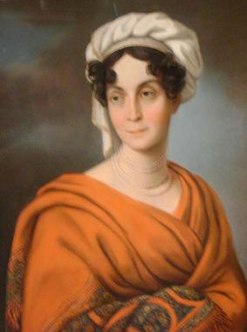
Duchess Charlotte Georgine of Mecklenburg-Strelitz was a member of the House of Mecklenburg-Strelitz and a Duchess of Mecklenburg-Strelitz by birth and a Duchess of Saxe-Hildburghausen through her marriage to Frederick, Duke of Saxe-Hildburghausen.

Princess Agnes of Anhalt-Dessau was the eldest daughter of Leopold IV, Duke of Anhalt by his wife Princess Frederica of Prussia. She was a member of the House of Ascania, and by her marriage to Ernst I, Duke of Saxe-Altenburg, Duchess consort of Saxe-Altenburg.
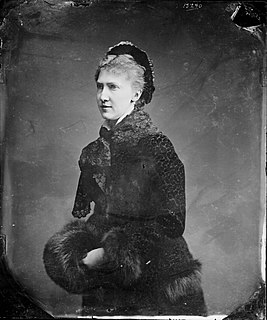
Princess Augusta of Saxe-Meiningen was the daughter of Bernhard II, Duke of Saxe-Meiningen and his wife Princess Marie Frederica of Hesse-Kassel. She was the mother of Ernst II, Duke of Saxe-Altenburg.

Princess Charlotte of Saxe-Meiningen was a member of the House of Saxe-Meiningen and a Princess of Saxe-Meiningen by birth and a member of the House of Saxe-Gotha-Altenburg and Duchess consort of Saxe-Gotha-Altenburg through her marriage to Ernest II, Duke of Saxe-Gotha-Altenburg.

Princess Adelaide of Schaumburg-Lippe was daughter of Prince William of Schaumburg-Lippe and consort of the last reigning Duke of Saxe-Altenburg Ernst II.
References
- 1 2 Gonschior, Andreas. "Der Freistaat Sachsen-Altenburg Landtagswahl 1919". Wahlen in der Weimarer Republik. Archived from the original on 2003-07-25. Retrieved 18 May 2021.